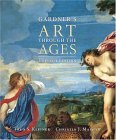
The Story of Art
Book Description
Art is a living dialogue connecting hearts and minds across centuries. In "The Story of Art," E.H. Gombrich unravels this intricate tapestry, guiding you through the triumphs and trials of humanity's most profound expressions. From the bold strokes of Renaissance masters to the daring experiments of modern visionaries, each page reveals a world bursting with creativity and passion. With every artwork, a story unfolds—of joy, struggle, and the relentless quest for meaning. What secrets do these masterpieces hold, and how do they reflect the ever-evolving human experience? Discover the answers that lie within this captivating journey through time.
Quick Book Summary
E.H. Gombrich’s "The Story of Art" stands as one of the most accessible and influential overviews of art history ever written. Gombrich charts the development of visual art from prehistoric times to the modern era, focusing on the intentions of the artist and the context of their work. Instead of merely cataloging masterpieces, he illuminates how each movement and innovation has built upon the last, leading to the dynamic and varied world of art we know today. Through vivid storytelling and insightful interpretation, Gombrich demystifies great works, revealing the universal human drive for expression, experimentation, and meaning. This book remains an essential guide for anyone seeking to understand not just what art is, but why it matters.
Summary of Key Ideas
Table of Contents
The Evolution of Artistic Expression Across Time
Gombrich begins by introducing art as a universal language, tracing its earliest forms in prehistoric cave paintings and ancient artifacts. He emphasizes that art emerges from basic human impulses—such as the desire to record, communicate, and beautify—and that even the simplest early works reflect complex beliefs about the world. By contextualizing the origins of art, Gombrich invites readers to see familiar masterpieces as extensions of a long, evolving tradition rooted in human needs and ideas.
The Influence of Culture and Society on Art
As the narrative advances, Gombrich explores how cultural and societal changes shaped artistic developments. From the grandeur of Egyptian tombs to the idealism of Greek sculpture, and the symbolism of medieval Christian art, he shows how art both mirrors and molds societal values. Shifts in patronage—from church and monarchy to merchants and collectors—transform art’s themes, styles, and audiences, reflecting the changing world that art both serves and critiques.
Innovation and the Role of Individual Artists
Central to Gombrich’s account is the pivotal role of individual artists who challenge conventions and push creative boundaries. He highlights figures like Giotto, Leonardo da Vinci, and Rembrandt, who each revolutionized technique, perspective, and narrative in their own eras. Gombrich demonstrates that innovation often results from artists’ willingness to break the rules, assimilate new knowledge, and respond imaginatively to their surroundings.
The Changing Perception and Purpose of Art
The book chronicles how the perception of art evolved—from functional or religious objects to self-conscious expressions of creativity. In the Renaissance, artists began to assert their status, and by the modern era, art became a domain for personal vision, abstraction, and social commentary. Gombrich addresses the rise of movements such as Impressionism, Cubism, and Surrealism, showing how artists continually redefine what art can be in response to technological advancement and changing philosophies.
The Accessibility and Appreciation of Art
Throughout, Gombrich champions the idea that art should be accessible to all. He avoids jargon, instead illuminating works through clear, engaging prose and a sense of wonder. In concluding, Gombrich reminds readers that the story of art is ongoing—a dialogue across continents and centuries shaped by myriad voices. The book ultimately invites readers not just to observe but to participate in the appreciation and understanding of art’s enduring journey.
Download This Summary
Get a free PDF of this summary instantly — no email required.





